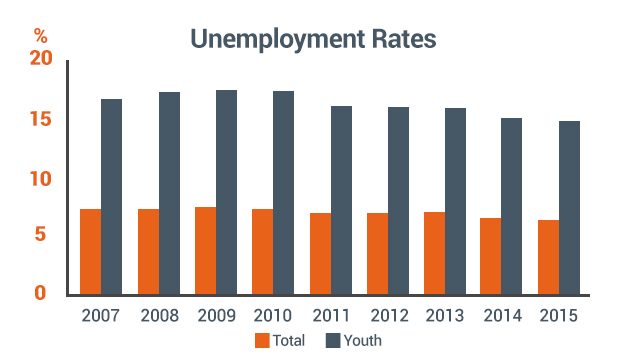SUMMARY
This is AI generated summarization, which may have errors. For context, always refer to the full article.

MANILA, Philippines – Lower global economic prospects have dragged the Asian Development Bank’s (ADB) Philippine economic growth projection for 2016 to 6%.
During the launch of the 2016 Asian Development Outlook in Mandaluyong City on Wednesday, March 30, ADB principal economist Sona Shrestha said the Japan-led financial institution has lowered its projection for the country’s gross domestic product (GDP) growth to 6% in 2016, from its earlier forecast of 6.3%, as “external growth turned out to be lower than anticipated at that time.”
For 2017, the ADB’s Philippine GDP forecast is 6.1%
“It has to do with challenging global environment and more sluggish growth of advanced countries. But relative to other developing countries, the Philippines is improving a lot,” ADB principal economist Donghyun Park said during the briefing.
In its latest study, the ADB said Philippine economic growth is projected to pick up with higher investment and consumption.
“While the Philippines continues to experience headwinds, including a strong El Niño weather event which has affected agriculture, as well as weak external demand, economic growth remains strong,” said Richard Bolt, ADB country director for the Philippines. “Sustaining this growth will require the continuation of policies that support infrastructure and human capital development, improvements to the investment climate, and better governance.”
Driver: Private consumption
Broad-based domestic demand underpinned growth in 2015 with private consumption, which accounted for nearly 70% of GDP, rising by 6.2% on the year.
Higher employment, remittance inflows from overseas workers, and low inflation contributed to the growth in household spending, ADB said.
It added that improved budget execution also led to an increase in government expenditure, particularly on construction.
Government consumption rose by 9.4%, and public construction jumped by 20.6%.
“A fall in net exports was a considerable drag on the economy. Lower global oil and food prices dampened inflation, which averaged 1.4% on the year,” the ADB said.
Moving forward, the ADB said private consumption will still be the main growth driver in 2016, but the pace of increase “could be moderate.”
“Rising employment, higher government salaries, modest inflation, and remittance inflows all point to robust consumer spending,” Shrestha said.
The ADB added that buoyant imports of capital goods in 2015 and higher foreign direct investment suggest that private investment will maintain solid growth.
But the financial institution warned that the lower global economic prospects indicate that exports will decline slightly this year before turning up in 2017.
Risks: Higher agri, food prices
The ADB said risks to the 2016 economic outlook come from the impact on agriculture and food prices of El Niño, “if it is more severe than anticipated, and weaker-than-expected growth in main trading partners.”
The outlook is subject to more uncertainty than usual as the outcome of the national elections will have a bearing on policy.
“There is a degree of uncertainty. Having said that, in terms of human capital development and government reforms, we do not anticipate major changes in terms of direction of policy in those key areas,” Shrestha said.

She also highlighted youth unemployment as a key development challenge.
“While youth unemployment has declined in recent years at 14.4%, it is more than double the national unemployment rate and one in four young people are neither working nor pursuing education or training,” Shrestha said in her report.
The ADB said the country’s young population provides a window of opportunity to raise potential economic growth.
“The demographic dividend can be only be realized if the youth are in education, training or productive employment,” Shrestha said.
“Overcoming this challenge should be a cornerstone of the Philippines’ development agenda for the coming years,” she added. – Rappler.com
Add a comment
How does this make you feel?
There are no comments yet. Add your comment to start the conversation.